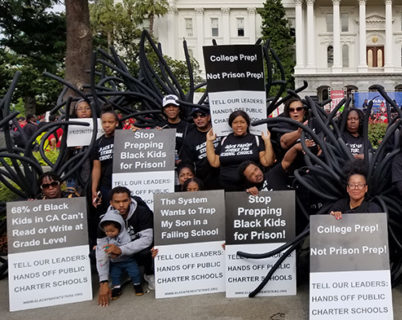There are 781 low performing schools in California, but not really, as the actual number of schools that are “low performing” is actually greater than 781. That number only represents the lowest 7% of schools that are failing. Of those 781 schools, 481 are Title I schools. And of those 481 Title I schools, 34 are Charter schools.
What is a Charter School?
“Charter schools offer a different approach to public school – one as unique California’s students. … Public, free, and open to all, charter schools are a vital part of public education in California.” *
What is a Title 1 School?
Title I, Part A federal funds help to meet the educational needs of students in California schools.
Funds are used to support effective, evidence-based educational strategies that close the achievement gap and enable the students to meet the state’s challenging academic standards. Title I-funded schools are either Targeted Assistance Schools (TAS) or Schoolwide Program (SWP) schools.
What do all of these schools have in common? They are part of the public school system. There is a current pernicious trend to vilify all charter schools and continue to ignore the real issue of thousands of failing schools — not just 781! Let’s remember that the magic number of 781 is derived from a list of failing schools, but only representative of 7% of those schools. Only 7%!
The fact is that nearly fifty percent of our schools are proficient in English Language Arts (ELA) and Math. 50%!! But apparently we have a cut off as to what the lowest “acceptable” schools are. The rest we can stomach and accept.
Charter schools only became legal in California as of 1992. Here are the facts:
“Charter schools are subject to the following conditions:
- An existing private school may not be converted to a charter school.
- A charter school must be nonsectarian.
- A charter school may not discriminate, nor can it charge tuition.
- No pupil can be required to attend a charter school, nor can teachers be required to work in a charter school.
- A charter school must have highly credentialed teachers in all core subjects. Teachers in charter schools shall hold a Commission on Teacher Credentialing certificate, permit, or other documents equivalent to that which a teacher in other public schools would be required to hold.
- Charter schools must admit all students who wish to attend the school; however, if the number of students exceeds the school’s capacity, attendance shall be determined by a public random drawing. Certain attendance preferences are available under state law.”
So, for the people who say that these schools “cherry pick their students”… yes, there are cases where limited capacity exists and there must be a lottery process, which is consistent with traditional schools policy for magnet school or other limited space programs. But of course, the rhetoric is that ONLY charter schools do this. Or what about the myth that charter school teachers don’t need to be credentialed? A pure fantastical myth perpetuated by teachers unions who really are just pissed off because they don’t get their CUT of the $$!!
Some charter schools are also low performing. Great, fix those failing schools too! We can’t discriminate. But for the record, we do have to be clear about what a failing school is, how many we have, and how to help fix them or shut them down.
Leticia Chavez-Garcia
Latest posts by Leticia Chavez-Garcia (see all)
- Claudia Sheinbaum: Mexico’s First Woman President - June 3, 2024
- Unpacking the Racist Attack by Labor Leader Brigette Browning - May 7, 2024
- Student Vaccine Mandate in California Scaling Back - June 10, 2022
- Siga estos 5 pasos para solicitar un Permiso de Maestro Suplente en California - May 24, 2022
- Early Childhood Special Education Teachers: The Burnout Crisis - May 24, 2022

